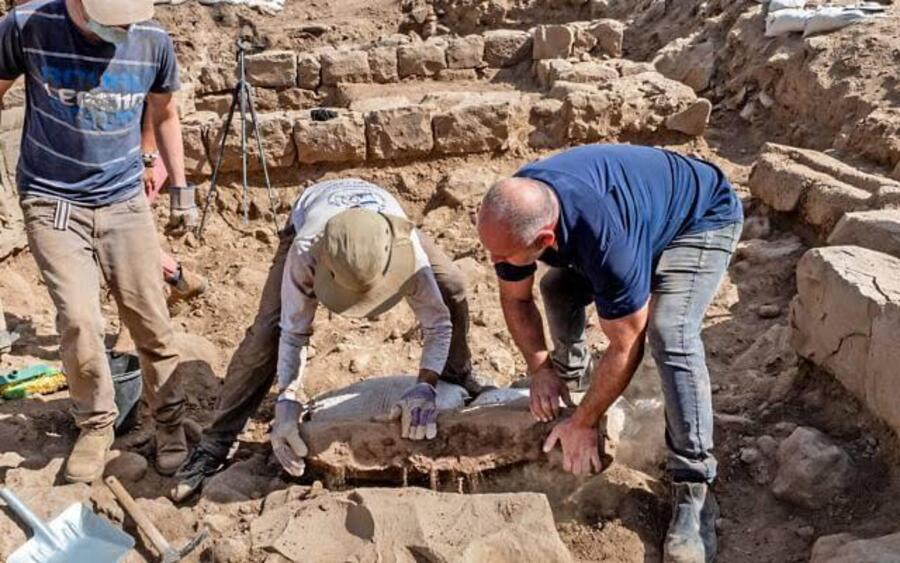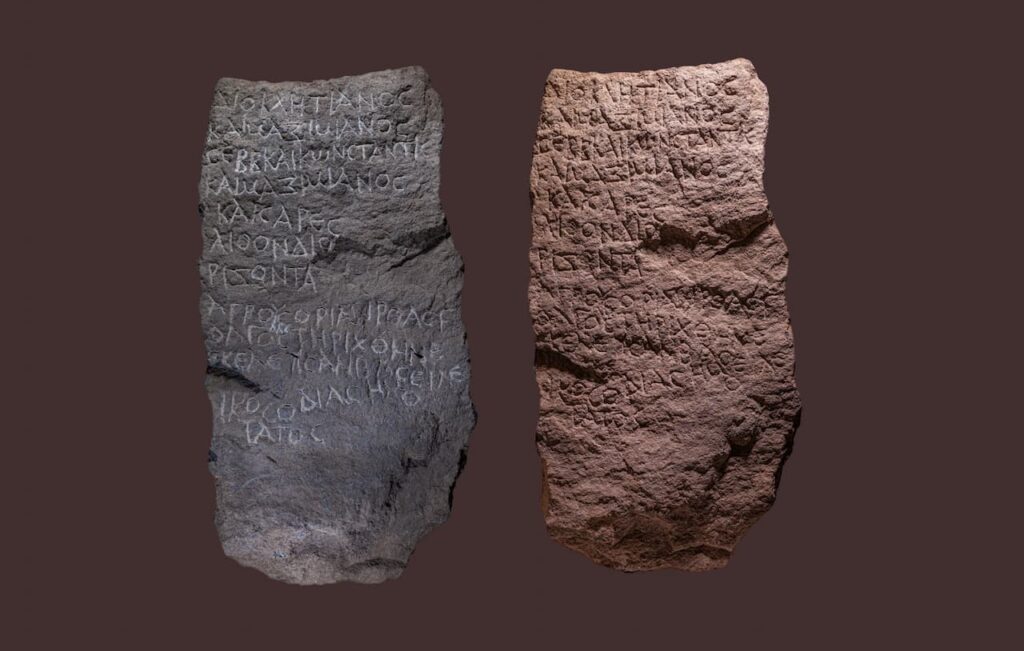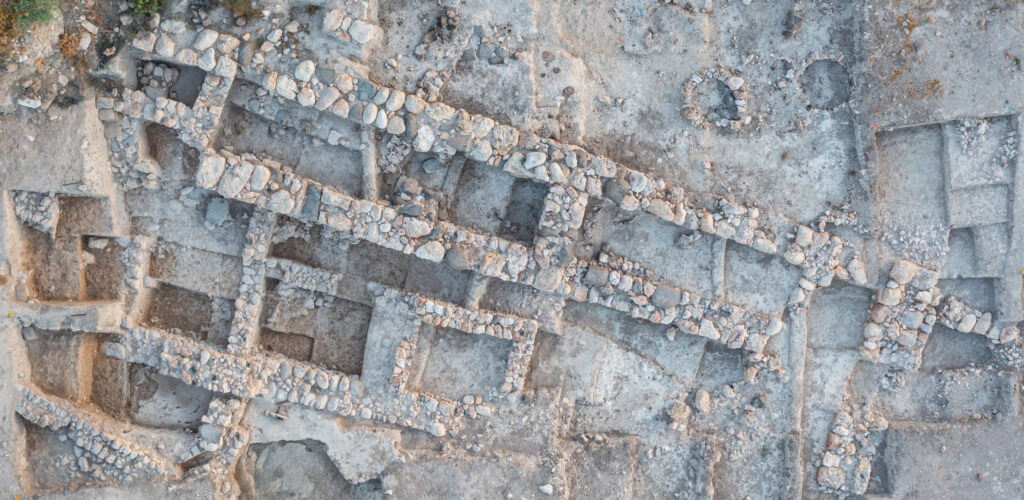
Archaeologists Discover Rare Boundary Stone From the Tetrarchy Period of the Roman Empire
Excavations at Tel Avel Beit Ma’akha, located about 1.2 miles south of Metula in northern Galilee, have led to an extraordinary find: a rare Roman boundary stone dating back to the Tetrarchy era. This ancient artifact provides valuable insights into land ownership, regional settlement patterns, and the administrative practices of the Roman Empire.
Insights into Roman Administration
The boundary stone sheds light on the governance of the Roman Empire under Emperor Diocletian. It reveals details about territorial organization, land ownership, and settlement patterns in the region. Additionally, the discovery enhances our understanding of the historical geography and socio-economic environment of the Roman Levant, including two previously unknown place names.
Originally, this basalt stone marked land borders as part of Diocletian’s tax reforms. Interestingly, it was later repurposed in a structure from the Mamluk period.
The Excavation Team
The discovery was made in 2022 by a team led by Prof. Naama Yahalom-Mack and Dr. Nava Panitz-Cohen from the Hebrew University Institute of Archaeology, along with Prof. Robert Mullins from Azusa Pacific University. Dr. Avner Ecker and Prof. Uzi Leibner played key roles in deciphering the Greek inscriptions on the basalt slab. Their research has been published in the journal Palestine Exploration Quarterly.

Understanding Diocletian’s Reforms
This tetrarchic boundary stone enhances our knowledge of the fiscal and territorial reforms instituted by Diocletian in the late 3rd century CE, when he established the Tetrarchy—a system of governance dividing the Roman Empire among two senior emperors (augusti) and their junior colleagues (caesares).
The original location of the boundary stone remains unknown, but its size and weight suggest it was likely situated near the discovery site. The stone measures 101 cm in length, with a maximum width of 48 cm and a thickness of 20–23 cm.
New Discoveries in the Inscription
The inscription on the stone originally delineated agrarian borders between villages during the Roman Tetrarchy. It was found in secondary use within a Mamluk-period installation. Notably, the inscription mentions two previously unidentified village names, Tirthas and Golgol, which may correspond to ancient locations documented in the 19th-century Survey of Western Palestine. Additionally, the name of an imperial surveyor, or “censitor,” is mentioned for the first time, highlighting the significance of land ownership and settlement patterns in the economic landscape of the Roman Near East.

A Testament to Roman Administration
“This discovery exemplifies the meticulous administrative reorganization of the Roman Empire during the Tetrarchy,” stated Prof. Uzi Leibner. “Finding a boundary stone like this not only illuminates ancient land ownership and taxation but also connects us to the lives of individuals who navigated these complex systems nearly two millennia ago.”
Dr. Avner Ecker added, “The mention of two previously unknown place names and a new imperial surveyor makes this find particularly exciting. It shows how even small discoveries can significantly enhance our understanding of the region’s socio-economic and geographic history.”
The Abel Beth Maacah border marker is part of a unique collection of over 20 boundary stones found in the area, illustrating the relationship between local settlement patterns and imperial policies.
Doi.org/10.1080/00310328.2024.2435218
Cover Image Credit: Israel Antiquities Authority
You may also like
- A 1700-year-old statue of Pan unearthed during the excavations at Polyeuktos in İstanbul
- The granary was found in the ancient city of Sebaste, founded by the first Roman emperor Augustus
- Donalar Kale Kapı Rock Tomb or Donalar Rock Tomb
- Theater emerges as works continue in ancient city of Perinthos
- Urartian King Argishti’s bronze shield revealed the name of an unknown country
- The religious center of Lycia, the ancient city of Letoon
- Who were the Luwians?
- A new study brings a fresh perspective on the Anatolian origin of the Indo-European languages
- Perhaps the oldest thermal treatment center in the world, which has been in continuous use for 2000 years -Basilica Therma Roman Bath or King’s Daughter-
- The largest synagogue of the ancient world, located in the ancient city of Sardis, is being restored











Leave a Reply